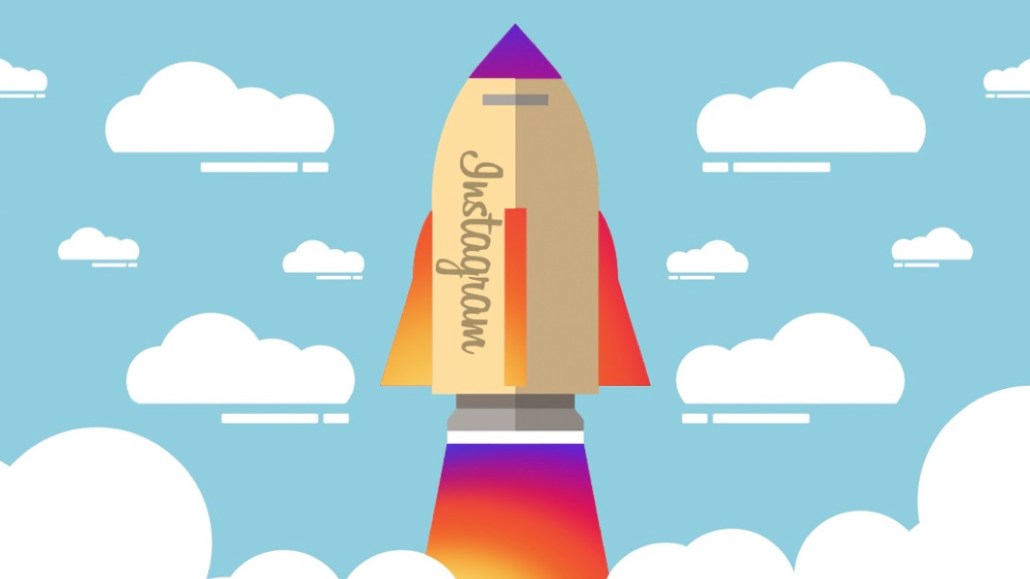
Publishers are piling into Instagram video. Fifteen months after the Facebook-owned platform raised the maximum length on a video from 15 seconds to one minute, video has become a central area of focus for publishers there, according to NewsWhip data.
BuzzFeed News, which published just two Instagram videos in May 2016, published 57 the following May. More than half of Time’s monthly Instagram output is now video, up from just 11 percent last March. ABC News’ output went from 4 percent to 87 percent; BBC News’ is now over 90 percent. The newfound emphasis is helping publishers deliver on many different kinds of goals, not just broadening reach but driving traffic, revenue and engagement both on and off the platform.
This surge in video opens up one more front in the war between Instagram and Snapchat, which are battling for user eyeballs and ad dollars. But so far, none of the publishers contacted for this story said they were pulling resources away from Snapchat or adding more to Instagram.
“We just try to tell a story in the way that’s most compelling,” said Jason Ehrich, svp of audience development and partnerships at Fox News, which posted over 11 times more videos in May 2017 (115) than it did in March 2016 (10). “If a story needs to be video, that’s what we do.”
Instagram introduced video very slowly. But it’s now at the center of the app experience, with its Snapchat-killing Stories buttons at the top of the app’s home screen and recommended videos front and center in its search area.
That slow rollout seems to have whet audience appetite. Even though many publishers have greatly increased their video output on Instagram, engagement has more than kept up. Bleacher Report got over 45 million engagements on its Instagram videos last May, a 200 percent improvement year over year, compared to just a 43 percent increase in the total number of videos published. CNN more than doubled the number of Instagram videos it published year over year, from 19 to 53, and, in the process, engagement on its videos surged over 500 percent.
“We started to put our creative brainpower behind different types of storytelling,” said Rory Brown, president of Bleacher Report. “We’ve also put some real budget behind this.”
Bleacher Report has long understood video’s appeal on Instagram — about 70 percent of its Instagram posts were videos last month, a percentage that has held steady year over year.
But for publishers that once put fewer videos in their feeds, many are finding that video serves plenty of other goals, from driving traffic to stories to engagement. “You just have so many options,” said Kira Pollack, Time’s director of photography and digital enterprise, adding that video is an increased area of focus across Time Inc. “We’ve looked at all the tools Instagram offers to do video.”
On Time’s feed, Pollack and her team make as many kinds of video as possible: Cinemagraphs that double as portraits, animated renderings of Time’s magazine covers, breaking-news footage, montages of celebrities stalking red carpets.
There’s an economic upside to this growth, too. While Instagram took its time offering publishers a way to monetize their presences there, many have gotten creative using things like product placement, influencer campaigns and commerce to drive revenues; last year, Instagram was responsible for 70 percent of GQ’s social revenue.
It’s also far outpaced the monetization opportunities available on Snapchat, which bars its users from doing branded content and keeps a tight grip on which publishers are allowed inside its Discover program, where publishers can monetize content through ads that Snapchat sells itself.
Video is core to that. Brands are looking to play a part, and publishers are only too happy to come up with ways for them to get involved. Sponsors including State Farm have signed on to sponsor numerous video series that Bleacher Report developed specifically for Instagram. “We like how high the ceiling is [for monetization],” Brown said.
That advertiser interest comes despite the fact that many publishers have big, but not enormous, followings on the platform — fewer than 10 of the top 100 most popular accounts on Instagram belong to publishers, according to SocialBlade. “The nice thing about publishers is they have the authority of an influencer, but the trust of a brand,” said Mariana Rittenhouse, the senior director of brand strategy at analytics firm Dash Hudson.
More in Media

Podcast companies turn to live events to capture growing advertiser spend
The surge in the number of live podcast events in 2025 reflects a broader shift: advertisers are betting bigger on podcasts — not just as an audio channel but as a full-fledged creator economy play.

Media Briefing: ‘Cloudflare is locking the door’: Publishers celebrate victory against AI bot crawlers
After years of miserably watching their content get ransacked for free by millions of unidentified AI bot crawlers, publishers were finally thrown a viable lifeline.

How Vogue could navigate potential industry headwinds as Anna Wintour — who agency execs say made ad dollars flow — brings on new edit lead
Anna Wintour’s successor at Vogue will have to overcome the myriad of challenges facing fashion media and the digital publishing ecosystem.








